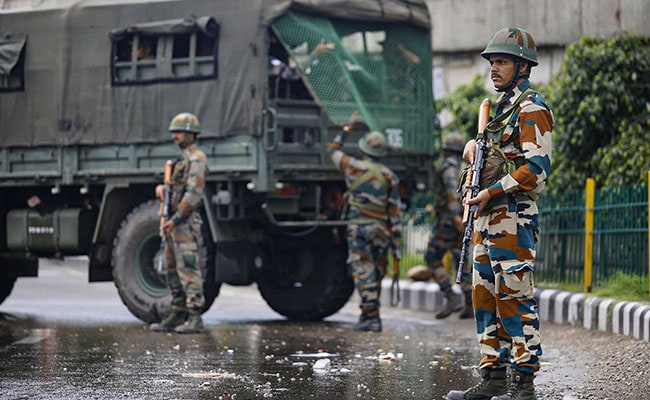Defence Minister Rajnath Singh convened a high-level meeting today focusing on the rising number of terror-related incidents in Jammu and Kashmir. The meeting, held at the South Block in New Delhi, was attended by top officials National Security Advisor (NSA) Ajit Doval and Army Chief General Upendra Dwivedi.
The meeting was called in response to a series of terror-related incidents that have plagued Jammu and Kashmir in recent months. The security forces across the Union Territory have been placed on high alert ahead of Independence Day. An Army captain was killed and four terrorists were gunned down in an ongoing operation in the higher reaches of Jammu’s Doda district today.
The situation in Jammu has become increasingly volatile, with a noticeable uptick in terror attacks. On August 10, two soldiers and a civilian were killed during a gunfight between terrorists and security forces in Anantnag. The region has witnessed attacks on an army convoy in Kathua, skirmishes in Doda and Udhampur, and a failed attack by the Pakistan Border Action Team (BAT) along the Line of Control (LoC) in Kupwara district’s Machchal sector.
According to the Ministry of Home Affairs (MHA), 28 people, including civilians and security personnel, were killed in 11 terror-related incidents and 24 counter-terror operations up to July 21 this year.
In the past two months, the frequency of attacks and ambushes has increased, particularly in the southern reaches of Pir Panjal, an area that had been relatively quiet in terms of terrorist activity for some time. Notable among recent incidents was an operation in which two Army officers were killed, and two Pakistani terrorists, including a Lashkar-e-Taiba sniper and explosives expert, were eliminated. Overall, casualties among security forces have doubled this year compared to the previous three years, with 17 security personnel and an equal number of civilians losing their lives.
A senior official told NDTV that the increased military casualties are a significant concern, which has led to the rationalisation of force deployment in the area with new combinations and strategies. The government, while maintaining a focus on securing the Kashmir Valley, has also recognised the need to bolster security in the Jammu region. This has resulted in the mobilisation of additional forces for deployment in key areas.
One of the primary objectives of the government’s new security strategy is to plug infiltration routes used by terrorists to enter Jammu and Kashmir. Security audits conducted by various agencies have identified around two dozen sectors along the Line of Control (LoC) in the Valley and the International Border in the Jammu sector where infiltration has been recorded. Terrorists, often with the assistance of local guides, use these routes to cross into Indian territory.
In addition to infiltration by foot, there is also evidence of weapons being smuggled across the border or dropped via drones. To counter this, the government has initiated a project to fence the borders. However, progress has been slow, with only 70 out of 180 kilometres of the border in Jammu having been fenced so far, and floodlighting completed for only 40 kilometres.
Two battalions of the Border Security Force (BSF), comprising 2,000 personnel, have been airlifted from Odisha and deployed in the Samba sector to plug gaps along the Jammu-Punjab border.
Recent intelligence reports suggest that terrorists may target highways, which are vital for troop movements and logistics. To secure these “lifelines,” the government has decided to deploy CRPF personnel along with local police to patrol highways and adjacent areas. Drones are also being used to monitor and map these areas for any suspicious activity.














